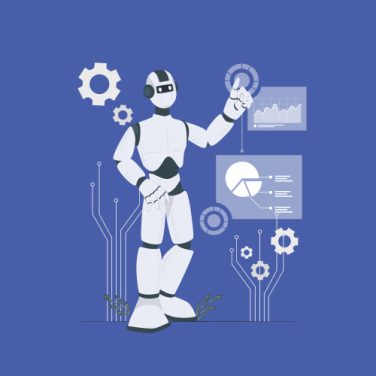Machine learning in recruitment applies statistical algorithms to streamline candidate evaluation and hiring workflows. By moving from manual resume reviews to data-driven decision making, human resources teams can reduce time-to-fill and improve candidate quality.
Traditional screening—where recruiters manually sift through resumes—often misses qualified talent and introduces unconscious bias. Algorithm-driven hiring platforms automate early-stage screening, match candidate profiles to role requirements, and continuously learn from outcomes to refine recommendations.
This blog will cover:
- Core machine learning techniques in hiring processes
- Key applications transforming recruitment
- Benefits for efficiency, diversity, and HR analytics
- Best practices and real-world integration with MiHCM
- Future trends in AI-powered recruitment
HR leaders and talent acquisition managers will gain actionable insights into leveraging machine learning for recruitment to ensure faster, fairer, and more strategic hiring.
How does machine learning work in hiring processes?
Machine learning in recruitment leverages three primary techniques to optimise hiring workflows:
- Supervised learning: Models trained on historical hire data identify patterns associated with successful candidates.
- Unsupervised learning: Clustering algorithms group applicants by skills, experience, or culture fit without pre-labelled outcomes.
- Reinforcement learning: Systems adapt over time based on recruiter feedback, improving candidate recommendations.
Natural Language Processing for resume parsing
Resume parsing uses NLP to extract structured data—such as job titles, skills, and education—from free-text resumes.
By mapping extracted entities to standardised fields, recruiters avoid manual data entry and can filter candidates by specific competencies.
Predictive fit scoring models
Predictive models analyse historical hiring and performance data to assign a fit score to new applicants. These scores prioritise candidates who closely match successful hire profiles, reducing time-to-hire by up to 40%.
Clustering techniques segment talent pools for targeted outreach, while continuous learning loops update models with real-time feedback.
As recruiters review candidates and record outcomes, the system refines its algorithms—ensuring machine learning in recruitment evolves with organisational needs and candidate behaviour.
Key applications of machine learning in recruitment
Leading applications of machine learning for recruitment include:
- Automated resume screening and keyword matching: ML algorithms scan resumes to identify relevant skills and experiences, reducing manual screening workload by up to 75%. Semantic analysis recognises context and synonym matches beyond simple keyword searches.
- Candidate sourcing with job ad optimisation: Predictive models optimise job advertising spend across platforms by analysing click-through and application rates. Continuous feedback loops improve targeting and boost quality applications.
- Chatbots and virtual assistants: AI-driven chatbots handle candidate queries, schedule interviews, and collect preliminary information around the clock, improving engagement and freeing recruiters for high-value tasks.
- Attrition risk and tenure prediction: Models analyse historical data to estimate candidate tenure and attrition risk, guiding hiring decisions and retention strategies.
- Workforce demand forecasting: ML-based forecasting tools predict future hiring needs by combining business metrics, historical hiring velocity, and market trends, enabling proactive talent pipeline development.
- Sentiment analysis of interview feedback: NLP analyses interviewer comments and survey responses to detect sentiment and potential bias, supporting fair evaluation and diversity goals.
These applications integrate with comprehensive HRIS solutions like those offered by MiHCM, ensuring seamless recruitment process, data-driven HR decisions, and efficient recruitment workflows across the talent lifecycle.
Benefits of machine learning for recruitment
| Benefit | Description |
|---|---|
| Reduce Time-to-Hire | Automates resume parsing and candidate matching, cutting screening time by up to 75%. |
| Improve Quality-of-Hire | Predictive scoring models surface top-fit candidates based on performance data and role requirements. |
| Increase Recruiter Bandwidth | AI handles repetitive tasks—such as initial screening and scheduling—freeing recruiters for interviews and strategy. |
| Enhance Candidate Experience | 24/7 AI-driven interactions keep applicants informed and engaged. |
| Actionable Insights | Real-time dashboards provide deep analytics on funnel metrics and hiring KPIs. |
How machine learning reduces bias and enhances diversity
Blind screening and anonymisation: Unconscious bias often creeps into manual resume reviews through demographic cues—such as names, ages, or schools. Blind screening algorithms anonymise resumes by removing or hashing identifiable fields, ensuring models focus solely on skills and experience. This approach prevents initial bias and promotes equitable candidate shortlisting.
Fairness metrics and audits: Algorithmic fairness methods apply statistical metrics—like disparate impact ratios—to detect and mitigate bias in model predictions. Regular bias audits retrain models on diverse, representative datasets, ensuring that underrepresented groups receive fair consideration. Human-in-the-loop checkpoints allow recruiters to review edge cases and adjust model parameters, maintaining transparency and accountability.
By combining anonymisation techniques with fairness audits and continuous monitoring, machine learning for recruitment supports inclusive hiring practices and enhances workforce diversity without sacrificing efficiency or quality.
Best practices for implementing machine learning in recruitment
- Start with clean, labelled historical data to train accurate models.
- Collaborate between HR, data science, and compliance teams to align objectives and governance.
- Pilot ML features on a single department or role before enterprise-wide rollout.
- Continuously monitor model performance, retrain regularly, and address drift.
- Maintain transparency with candidates about AI usage and data handling.
- Provide human oversight at key decision points to ensure accountability.
By following these best practices, organisations can minimise risks, optimise machine learning in recruitment, and drive sustained improvements in hiring efficiency and fairness.
Future trends in AI-powered recruitment
Prescriptive hiring and offer automation: Next-generation systems will not only predict top candidates but also recommend optimal offer packages by analysing compensation benchmarks, candidate preferences, and market data. Automated negotiation bots may interact with candidates to finalise terms, accelerating offer acceptance and reducing salary disparities.
Privacy-preserving modelling: Federated learning techniques enable organisations to train models across decentralised data sources—such as partner companies or regions—without sharing raw data. This approach preserves candidate privacy and complies with data protection regulations while enhancing model accuracy.
Other emerging trends include voice and facial analysis during video interviews for soft-skill assessment, augmented reality onboarding simulations, and integration of social media and learning platform data for enriched candidate profiles.
Embracing the AI-driven future of hiring
Machine learning in recruitment has the potential to transform hiring into a strategic, data-driven process that balances efficiency with fairness.
By automating routine tasks, enhancing candidate experiences, and providing actionable insights, HR teams can focus on high-value activities that define organisational success.



